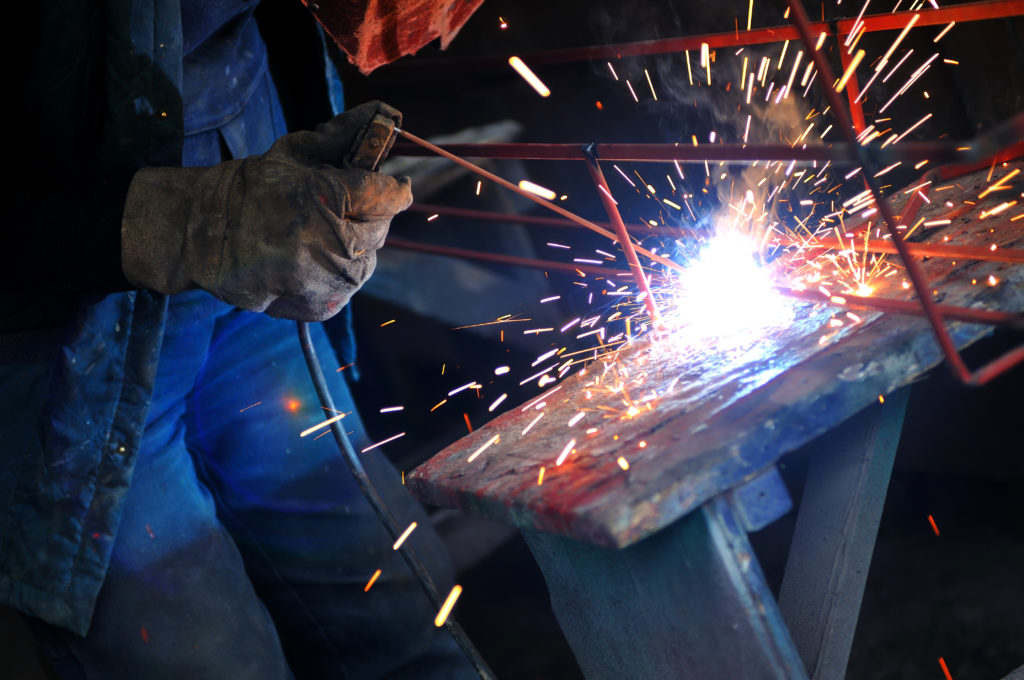Ever walked into someone’s office or cubical and thought, “How can they work in here?” Their space usually looks like a tornado ran through it. Most of the time we don’t think anything other than the person is a slob. But that messy office can be much more unsafe than you think. When we think of workplace safety, the first thing that comes to mind is usually construction or industrial work. A job where most of the work tasks are completed while sitting in a chair in an office building doesn’t seem dangerous. However, a surprising number of hazards can be present in an office setting.
Workplace Safety Programs Make Good Business Sense
According to data from the Bureau of Labor Statistics, 80,410 office workers suffered on-the-job injuries in 2012. Many of these injuries could have been prevented with the right safety training. Workplace safety programs make good sense from a moral standpoint. Maybe more importantly, it also makes good financial sense. If a worker is injured on the job, it costs the company in terms of lost man hours, increased insurance costs, workers’ compensation premiums, and legal costs.
An unsafe environment will probably make workers feel unappreciated as well. For instance, if the company provides poor training about operating machinery or doesn’t enforce a safety code, workers will probably feel the company doesn’t care about their well-being. This may lead workers to feel less loyal to the company and find work with companies that take better care of their employees. Fewer workers will probably apply to work with the company. Eventually, the most skilled workers will probably search for jobs elsewhere. Proper training will help employees feel good about working for the company.
Workplace Safety Increases Company Productivity
When a workplace is safe, workers feel more comfortable and confident. Productivity gets a boost and more money can be made. Absenteeism also drops when employers take steps to implement an effective workplace safety program. Fixing workplace hazards will help to keep employees working at their best through each workday. They won’t have to take time off to heal from an injury or illness.
For office workers, sitting for long periods of time each day can cause health problems. Office workers who are encouraged to take short breaks throughout the day to move around may feel better. They also enjoy far better long-term health benefits and accomplish more than workers who remain at their desks.
10 Ways to Ensure Safety in the Office
1. Stay Clutter-free
According to OSHA, boxes, files, and various items piled in walkways can cause you to trip. To improve workplace safety, make sure that all materials are safely stored in their proper location to prevent buildup of clutter in walkways. Make sure you are covering all electrical cords that are on the floor. You also want to keep your phone and tablet chargers is a safe place as well.
2. Step On Up
Standing on chairs particularly rolling office chairs is a for sure “No-No”. If you need to reach something that is up higher, you have to use a stepladder. If you have on heels, please take them off!!! Stepladders must be fully opened and placed on a level, firm ground.
3. Keep Doors Shut
File cabinets with too many fully extended drawers could tip over if they are not secured. Also, if you leave your drawers open on your desk and file cabinets, someone can accidentally trip. So be sure to always completely close drawers when you’re not using them.
4. Safe Stacking
Proper storage of heavy items can help reduce the number of office injuries. Large stacks of materials can cause major injuries if they are knocked over. Store heavy objects close to the floor. Make sure the load capacity of storage is never be exceeded.
5. Stay Grounded
Very often workers have their keyboard on the desktop. To reach it, they need to jack up their chair so high that their feet can barely touch the floor. This creates potential a potential hazard to workplace safety. If your feet are not placed flatly on the floor, your chair can’t provide the proper support. Using an adjustable keyboard tray or rolling table adjusted to the proper height will eliminate this problem.
6. Watch Mouse Placement
How many times have you seen people’s workstations where the computer keyboard is on a tray and the mouse on the desk? That puts a lot of stress on your neck and shoulder. Your mouse should always be placed beside the keyboard.
7. Don’t Stress About It
Common causes of workplace stress include long hours, heavy workload, job insecurity, and conflicts with coworkers or bosses. Stress from work can lead to depression, sleeping difficulties and problems with concentration. Don’t over-work yourself.
8. Avoid Stooping or Twisting.
To improve workplace safety, use ergonomically designed furniture and equipment, and rearrange your work area so that everything you need is within easy reach.
9. Take regular breaks
Staying fresh and alert will help you avoid injury or burnout. Step away from your desk for a few minutes. It will help you to regroup. You also want to schedule the most difficult tasks of each day for times when your concentration is best, such as first thing in the morning.
Workplace safety should be everyone’s top priority. Work related injuries are less likely to occur if all employees know the safety guidelines. Employees should also understand how to incorporate them into the workplace daily. Responsible employers understand that a safe workplace improves the company’s overall success. There are advantages having a safe work environment. To do otherwise would simply be irresponsible.
If you have any great workplace safety tips that you use to keep your office safe and happy please share them with us. Sharing is caring! We should all want a safe workplace for everyone.
Related: WORKPLACE STRESS: 4 STEPS TO MANAGING YOUR TRIGGERS

